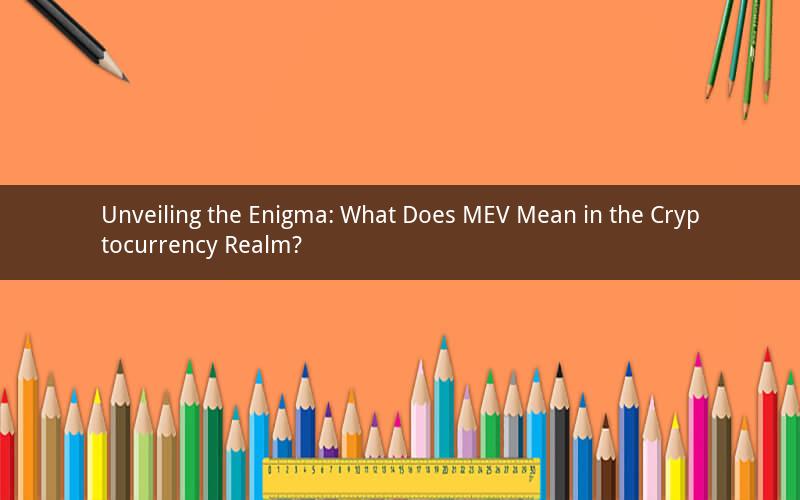
In the vast and ever-evolving world of cryptocurrencies, there is a term that has become increasingly significant – MEV. MEV, or Maximum Extractable Value, refers to the potential profit that a miner or a validator can earn by making strategic decisions about the order and content of transactions in a blockchain network. This article delves into the intricacies of MEV, its implications for the crypto ecosystem, and its potential future developments.
Understanding MEV
At its core, MEV is the concept of extracting the most value possible from the blockchain's transactional environment. Miners and validators, who are crucial in maintaining the integrity and security of a blockchain network, have the power to manipulate the order of transactions. By strategically choosing which transactions to prioritize and which to delay, they can capitalize on price fluctuations and gain a competitive advantage over other network participants.
The Mechanics of MEV
To understand MEV, it is essential to grasp the mechanics behind it. When a transaction is broadcast to the blockchain, it enters a pool of pending transactions. Miners and validators then select transactions from this pool to include in the next block. The selection process is not entirely random, as it is based on the potential value that can be extracted from each transaction.
Here are some key factors that influence MEV:
1. Transaction Fees: Miners are incentivized to prioritize transactions with higher fees, as these generate more revenue.
2. Order of Transactions: The order in which transactions are included in a block can impact their profitability. For instance, a transaction with a high fee that follows a series of smaller transactions can lead to increased MEV for the miner.
3. Price Fluctuations: Miners can exploit the volatility of cryptocurrencies by timing their transactions to take advantage of favorable price movements.
The Impact of MEV on the Crypto Ecosystem
The presence of MEV in the cryptocurrency ecosystem has both positive and negative implications.
1. Incentivization: MEV provides additional incentives for miners and validators to secure the network. The potential for profit can attract more participants, enhancing the overall health of the blockchain.
2. Market Manipulation: MEV can be used to manipulate the market, leading to unfair advantages for certain participants. This can create an uneven playing field and undermine the trust in the network.
3. Transaction Costs: The increased demand for MEV can lead to higher transaction fees, making it more expensive for users to participate in the network.
Potential Future Developments
As the cryptocurrency industry continues to evolve, several potential developments related to MEV can be anticipated:
1. MEV Bots: The development of MEV bots, which can automatically analyze and exploit opportunities for MEV, could increase the complexity of the blockchain ecosystem.
2. MEV Fees: In response to the potential negative impact of MEV, some blockchain networks may introduce MEV fees, which would compensate miners for the risks they undertake.
3. Enhanced Transparency: Efforts to enhance the transparency of the MEV process can help ensure that all network participants are treated fairly and that market manipulation is minimized.
Frequently Asked Questions
1. What is the difference between MEV and transaction fees?
MEV refers to the potential profit that can be extracted from the order and content of transactions, while transaction fees are the fees paid by users to have their transactions processed.
2. Can MEV be used to manipulate the market?
Yes, MEV can be used to manipulate the market by strategically timing transactions and taking advantage of price fluctuations.
3. How does MEV affect the security of a blockchain network?
MEV can potentially undermine the security of a blockchain network by creating opportunities for market manipulation and unequal treatment of participants.
4. Is MEV a threat to the decentralization of cryptocurrencies?
While MEV can create challenges for the decentralization of cryptocurrencies, it is not inherently a threat. The industry can work to address the issues associated with MEV while maintaining the core principles of decentralization.
5. Can MEV be eliminated from the blockchain ecosystem?
It may be challenging to eliminate MEV entirely from the blockchain ecosystem, as it is a byproduct of the existing transactional structure. However, efforts can be made to mitigate its negative impact and promote a more equitable and secure network.
In conclusion, MEV is a multifaceted concept with significant implications for the cryptocurrency ecosystem. By understanding the mechanics of MEV and its potential future developments, we can better navigate the ever-evolving world of cryptocurrencies and ensure the long-term health and security of blockchain networks.